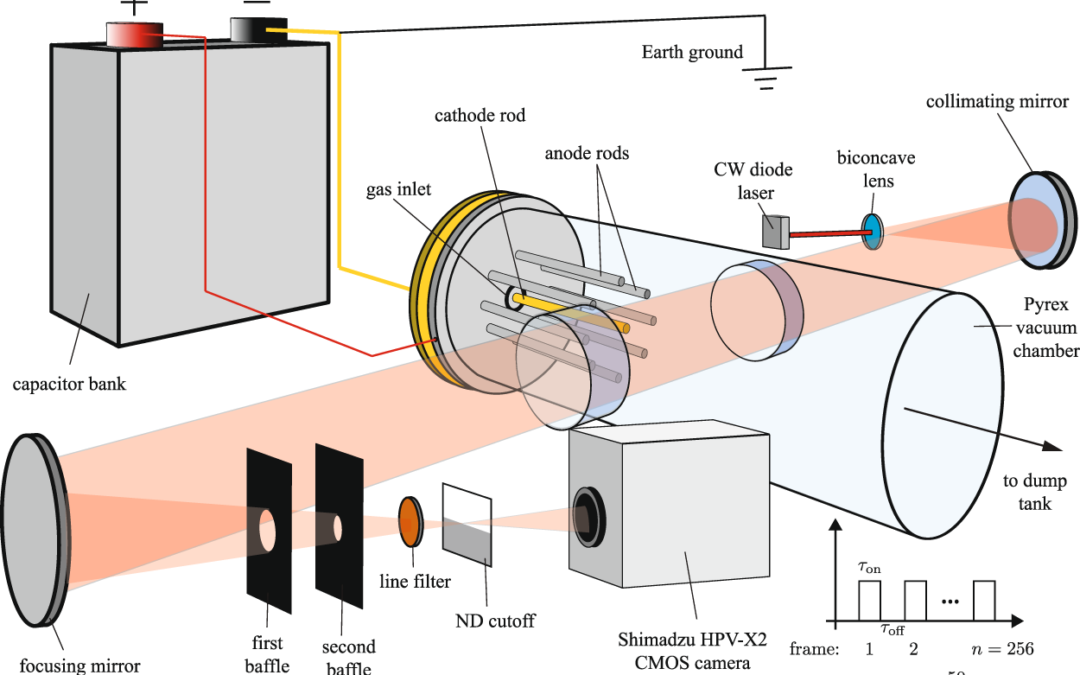by Thomas C. Underwood, Keith T. K. Loebner, Victor A. Miller & Mark A. Cappelli
Published online at nature.com on February 22, 2019
Abstract
Instabilities play a prominent role in determining the inherent structure and properties of magnetized plasma jets spanning both laboratory and astrophysical settings. The manner in which prominent unstable modes dynamically evolve remains key to understanding plasma behavior and control. In astrophysical phenomena, self-similar jets are observed to propagate over vast distances while avoiding breakup caused by unstable mode growth. However, the production of stable dense plasma jets in the laboratory has been limited by the onset of unstable modes that restrict jet lifetime, collimation, and scalability. In this work, we visualize the formation of stable laboratory-generated, dense, super-magnetosonic plasma jets in real time, and we identify an underlying mechanism that contributes to this behavior. The current-driven plasma jets generated in our experiments form a flowing Z-pinch, which is generally unstable to the m = 1 kink instability. Our results indicate that a stable dense plasma jet can be maintained for timescales over which a steady pinch current can be sustained, even at levels which would otherwise lead to rapid unstable mode growth and resultant pinch disassembly.
Introduction
The dynamics of unstable mode growth is a principal concern in understanding plasma behavior and control. In particular, current-driven plasma jets exhibit a host of instabilities and yet retain remarkable features of practical interest. For instance, unstable modes play a role in the formation and propagation of astrophysical jets and are a limiting factor in plasma-jet driven magnetized target fusion, z-pinch schemes, and spheromak and compact toroid plasma generation and control. Understanding how stable plasma jets can be formed and maintained remains an important area of ongoing research. Recent work in both the pinch and tokamak communities indicate that background shear flow can significantly contribute to plasma stability. In this work, we present direct schlieren visualizations of current-driven plasma jets and use this diagnostic to view their stable formation in real-time. We observe that magnetohydrodynamic (MHD) instabilities initially present in the system are dynamically damped over observable scales as the plasma flow fully develops. Finally, we present a theoretical description to identify the unstable modes and quantify the role that shear flow plays in the observed MHD stability of plasma jets.
Keywords: Shimadzu Hyper Vision HPV-X2, schlieren imaging, plasma behavior, astrophysical phenomena
